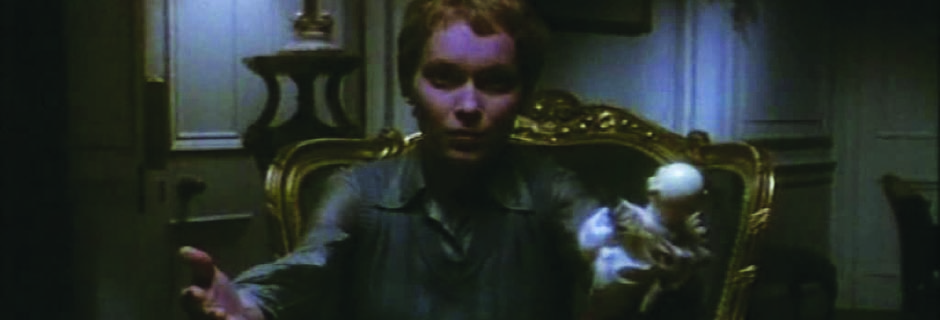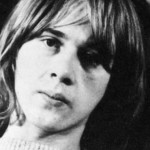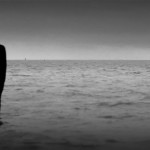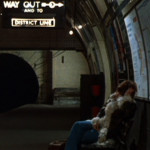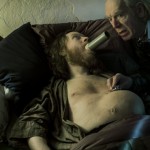AN INTERVIEW WITH COLIN TOWNS
AN INTERVIEW WITH COLIN TOWNS
The composer of Richard Loncraine’s elegiac Full Circle (aka The Haunting of Julia) reflects upon his first, iconic movie score
Kier-La Janisse
———————-
While the film itself is something to cherish, the thing that indelibly clings to the memory about Richard Loncraine’s long-unavailable ghost story Full Circle (aside from the faded, pan and scan VHS fuzz that offered many fans’ only means of viewing it) is Colin Towns’ amazing score.
The low dirgeful hums, the plaintive piano, the surprisingly effective use of the synthesizer pharmacy selling viagra in israel as an instrument that was both striking and subtle. Being made in 1977, the film came at a time when the favored instruments of progressive rock were making their way into film scores – and indeed they had been used frequently throughout the 60s to score television shows (Dr. Who) and films (A Clockwork Orange) – but often it was the instrument’s bombastic qualities that were emphasized in these early efforts. By the late 70s there was more diversity in the instrument’s use – you can’t really compare ELP with Giorgio Moroder for instance – but rarely had it fit so seamlessly into a towering gothic landscape seemingly at odds with the instrument’s futuristic reputation. Even Mario Bava’s Shock, which came out the same year and had a synth score by Italian prog-rockers Libra – had its setting in a house full of weird modern art.
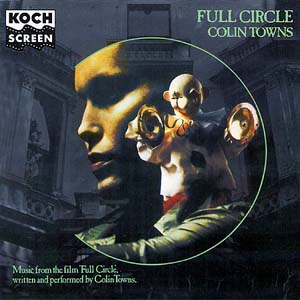 Like Nicolas Roeg’s moody grief-horror film of a few years earlier Don’t Look Now, what pervades Full Circle is the dread of disassociation, of dis-integration. The grieving parents of both films see ghosts they want to see, ghosts http://www.pinneggiando.it/?p=916 they hope can absolve them of guilt. And in both films, that elusive miniature presence that they follow and chase is not a friendly one. Towns’ music underscores that beckoning mystery with a sad, suicidal anxiety that is not easily shaken off.
Like Nicolas Roeg’s moody grief-horror film of a few years earlier Don’t Look Now, what pervades Full Circle is the dread of disassociation, of dis-integration. The grieving parents of both films see ghosts they want to see, ghosts http://www.pinneggiando.it/?p=916 they hope can absolve them of guilt. And in both films, that elusive miniature presence that they follow and chase is not a friendly one. Towns’ music underscores that beckoning mystery with a sad, suicidal anxiety that is not easily shaken off.
Colin Towns talks to Spectacular Optical about the experience of making his phantasmagorical levitra super soundtrack debut.
————————————-
Did you get brought on at script stage and submit music piecemeal, or was the film finished already when you scored it?
The producer Peter Fetterman came into April Music (CBS music publishers at the time) looking for a composer. I had a very small deal with April Music and they knew I was desperate to cialis online doctor work in film. I was given the script and two hours in the studio to produce a where can i buy cialis demo. The film was originally called The Link. I used a synth and acoustic piano to record http://www.spectacularoptical.ca/2021/02/discount-viagra-cialis-levitra-online/ the main theme (approx 5 minute piece). The demo was used to convince Mia Farrow to take the lead (she loved the demo). Virgin Records was very interested and came on board with an album release. The album was re-recorded as a solo album and originally Gus Dudgeon (Elton John’s producer) was to produce it. However, after many meetings and preparations, Gus was unable to produce it due to other work, so I produced it myself. The band Queen also came on board financially.
What was the Queen connection?
There’s not really much to add to that I’m afraid. Queen helped finance it. I’m unsure of the connection, perhaps it was through Virgin records. On a couple of occasions since when I have bumped into members of the band they have always mentioned Full Circle, so it’s obviously a project they remember.
What was your collaboration process with Richard Loncraine?
Richard was the first director I had worked with, and Full Circle was his second feature film[i]. I worked (and still do in some ways) by intuition rather than academically. We obviously ‘spotted’ the film together, but as I had supplied him with many rough ideas, he was able to lay into the film some of these pieces and we would then discuss how they were working.
This was your first film score – has your process for working with directors changed since then?
Yes, of course every director has his or her way of working and I moved swiftly into other ways of scoring, especially orchestral. Full Circle will always be special for me as I had total freedom and could experiment. Much of this approach has sadly become a luxury. I still write a large amount of electronic music, but with lower budgets and having more people giving opinions as I score, I find myself often having to create orchestral type music without an orchestra.
It’s interesting that the film has a synthesizer score – often associated with a sound of the future, but the film is so gothic, everything is antiquated, focused on recalling the past etc. How did you find a balance between the past and the future, emotionally , through the music?
I didn’t take on board the past and future. For me, it was all happening at one time. The atmosphere was what I went for musically. Spooky but haunting and emotional. I used the synth, not as a kind of new toy, but as a moving and emotional instrument.
You were simultaneously in the band Gillan with Ian Gillan of Deep Purple – did your work with Gillan dictate the ways you wanted to experiment when you had the chance to do a film score? For example, the score is very ethereal and even romantic at times, in contrast to the rock sound of Gillan.
I had only just joined The Ian Gillan Band, as it was at that time. The synth I used came from the band. I certainly couldn’t afford this sort of equipment at that time. But there is no other connection to that music. I had composed a large amount since I was fourteen and already had my own musical vision which I was trying to realise.
Along with the LP, there was a 45 single released for Full Circle when it first came out, both containing the ballad ‘Olivia’ that I don’t recall being in the film! What’s the story behind this? How many copies of the LP and 45 were there?
The song was written for the album. There may have been a discussion as to whether it would fit into the film, but I can’t remember. I loved the tape looping effect that I had heard and thought it would be good for the track. I’m not the singer I would like to be, but I will always persevere until things work as I imagine they should. In the end I thought it worked pretty well on the album. I have no idea how many copies of the records were pressed or sold. I was very new to the music business.
The album was recorded at Kingsway Recorders in London, which was where ‘House of the Rising Sun’ and Fleetwood Mac’s ‘Oh Well’ had been recorded, did you have access to the studio through Chas Watkins’ and his history with Deep Purple and Gillan etc?
I was given a recording budget for film and album. Some early recordings were made in studio 1 at CTS Wembley. I then took the multi-track to Kingsway to finish the tracks. I didn’t have access to the studio as you imply, it was paid for, and yes, Chas Watkins was the engineer.
What kinds of synthesizers were used in the score?
ARP 2600. Solina string machine. Clavinet and Steinway piano.
After its initial release in 1978, it was re-issued on CD in 1995 but is long out of print. And the movie itself has never been on DVD, and film prints are extremely rare (and not in circulation) – so it’s almost considered a ‘lost’ film. What’s your own take on the film and the soundtrack this many years later?
I still receive very nice emails from people who love the music. It is always lovely to hear that a piece of music means so much to someone. For me it was a real beginning and listening to it now (I don’t usually listen to my music after it is finished) it has something of the time I still feel good about. I was very pleased that Peter Fetterman walked into April Music when he did.
—————————-
Full Circle (aka The Haunting of Julia) screens on Sunday July 22 a t3:15pm in the Salle JA DeSeve, as the launch event for Kier-La Janisse’s new book from FAB Press, House of Psychotic Women: An Autobiographical Topography of Female Neurosis in Horror and Exploitation Films. Books will be available for purchase at the screening. For more films in the House of Psychotic Women repertory spotlight, see the event page HERE.
[i] Loncraine had previously directed the equally depressing rock biopic Slade in Flame starring Noddy and the boys alongside the beautifully-coiffed Tom Conti, who returns to play Mia Farrow’s ambiguous confidante in Full Circle.

 July 21, 2012
July 21, 2012  No Comments
No Comments
